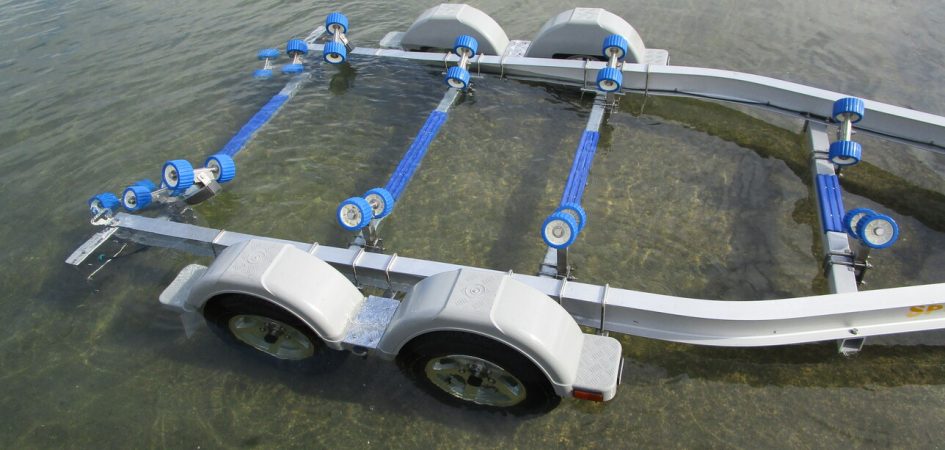
Should I use a multi-roller configuration…or will a simpler and cheaper bunk & keel slide layout work for me?
This is perhaps the most frequent question raised when boaties enquire about a new trailer. It’s often driven by growing frustration with poorly performing rollers and the desire for a more convenient ‘drive-on’ trailer.
Every boat owner has unique requirements. You need to know that these are being taken into account and that you are being properly informed of the alternatives to ensure enjoyable boating – in particular your launch and retrieval experience, and proper boat care.
New generation materials have fantastic sliding and hull-friendly properties, and together with lower trailer profiles, there are many excellent reasons to simplify trailers and reduce unnecessary costs and maintenance. Why complicate your boating experience?
In the trailer pictured below, the keel slides and bunks utilize specially molded high-quality High-Density Poly Ethylene instead of the usual and much harder Teflon or Nylon. HDPE provides a much more effective sliding interface with very low resistance and performs better than most rollers can achieve… cheaper, lighter, has simple lines, has a wide entry, is less complicated than rollers…and is friendly to fiberglass or alloy hulls.
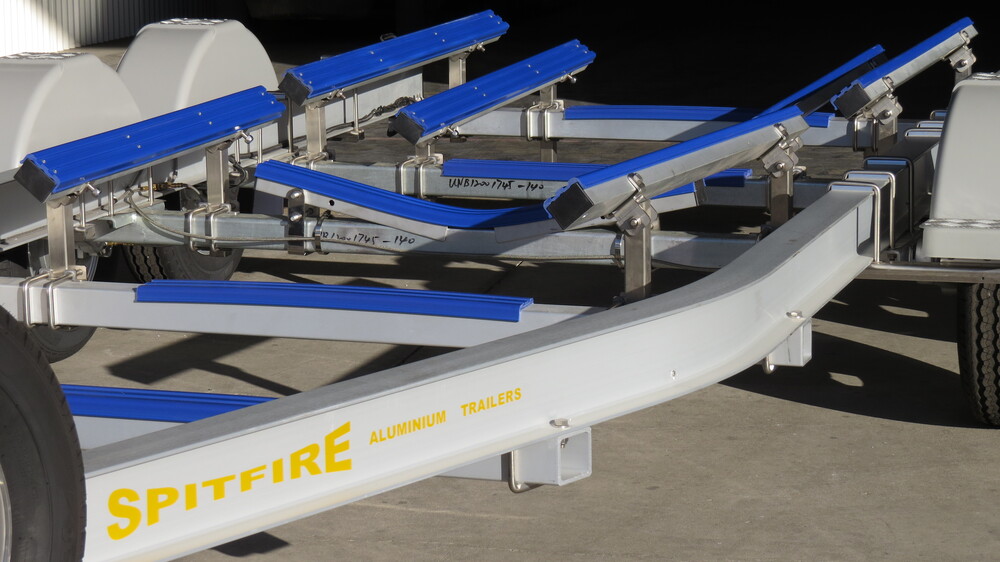
So how do you decide? A good start is to build a profile of your own unique requirements…
Previous experience: If rollers or bunks & slides have worked for you before… then this is probably a good pointer for your new trailer.
Hull design: On most boats, the strongest part of the hull is the keel and most of the weight should be taken there. Fibreglass keels supported by rollers can suffer point load damage while alloy keels can destroy rollers.
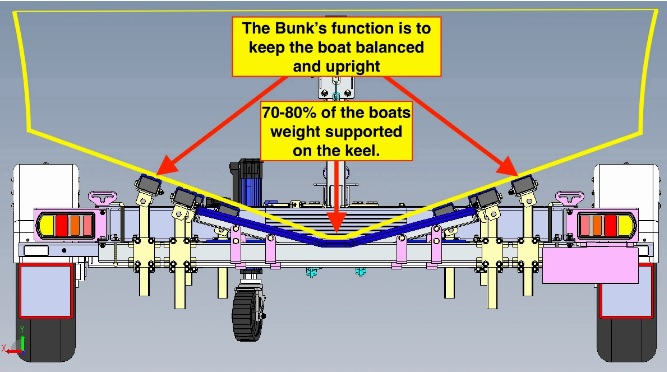
The side supports should be simply that… side supports to keep the hull upright – taking only a small % of the boat’s weight. A wide contact surface and keel support area integrated with high-quality sliding material is an excellent proposition to consider.
Bunks will always provide the highest surface support area and lowest hull pressure contact. Rollers provide only point load and the highest hull pressure contact. A boat regularly trailed long distances will be better cared for using bunk side supports than with rollers.
Bunks covered in the carpet are an absolute ‘no-no’ and will lead to hull corrosion, osmosis, and high abrasion from retained sands and moisture so make sure your trailer is fitted with materials that are softer than fiberglass and suitable for alloy hulls, such as HDPE.
Winching or driving on A drive-on trailer needs to have a low profile, as well as a wide and clear entry target area that is unencumbered. The
keel should make first contact only a short way along the trailer. Side rollers or bunks, combined with keel slides, provide an excellent combination for wide-target and unencumbered drive-on while being very suitable for winching in shallow conditions.
The trailer layout pictured below is suitable for both drive-on and winch-on use.
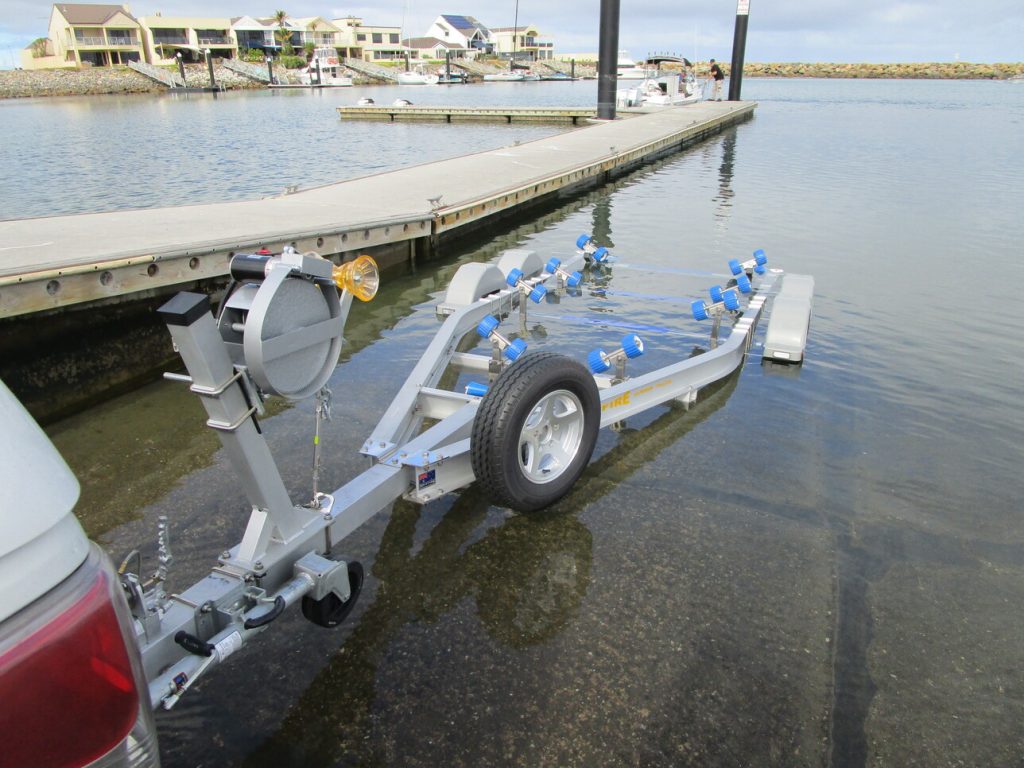
Multi-roller trailers with too many rollers are poor performers compared to the use of new generation sliding materials. Sand and grit always contaminate and pit galvanised roller shafts, quickly increasing the total rolling resistance. If keel and hull support rollers must be used, consider using Stainless Steel roller shafts together with high quality composite rollers.
Watch the ease with which keel slides can be used for launching and retrieval here:
Launch: https://youtu.be/I3eOZymvdpE
Retrieve: https://youtu.be/f4xrZjm2EAM
Below is an example of two trailers used with the same boat. Why frustrate your boating experience using the trailer on the left…when you can enjoy the simplicity and convenience of the trailer on the right?
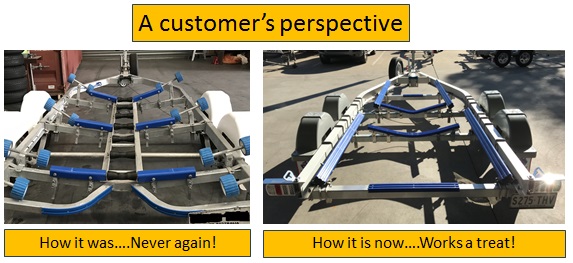
Weather and environmental conditions for retrieving
In calm conditions, both rollers and bunk & keel slides provide acceptable retrieving options. However, in swells, waves, cross-winds, and currents, keeping a hull on the rollers during retrieval is difficult and often results in significant hull damage. Keel support slides, coupled with either bunk or rollers for side support will provide much safer and more efficient retrieval.
Retrieval off a beach is challenging under any circumstances. Whichever type of trailer is used, it’s important that the trailer be allowed to tip up while taking the initial weight of the boat during winching.
Trailing a boat long distance
Road conditions always cause the flexing of a trailer. This movement has the potential to provide considerable and repetitive force against the side of the hull, as well as providing an impact force under the keel.
Any trailer configuration that increases the surface area of contact against the boat hull is much better for your boat because it spreads the load. This is easier to achieve with bunk & keel slides than rollers.
In summary – the choice of rollers versus bunks & keel slides is best finalized when each person’s unique situation is taken into account – rather than adopting someone else’s choices for your boat and how you wish to use it.
Roller pro’s
– A good option for retrieving boats in shallow water (when the water level is below the rear of the trailer)
Bunk & keel slides pro
– Super slippery with more even load distribution and better hull support
– Lower height, lower cost, lower weight, less maintenance
